How to Make a Pebble Tray for Plants: A Humidity Hack
Are you looking for an easy and effective way to boost the humidity levels of your beloved indoor plants? Look no further! In this guide, I’ll show you how to create your own pebble tray for plants and why they can be a game-changer for your plant care routine.
Not only will you learn why pebble trays are beneficial, but we’ll also explore creative and fun ways to display and style your pebble tray to keep your plants happy, healthy, and stylish.
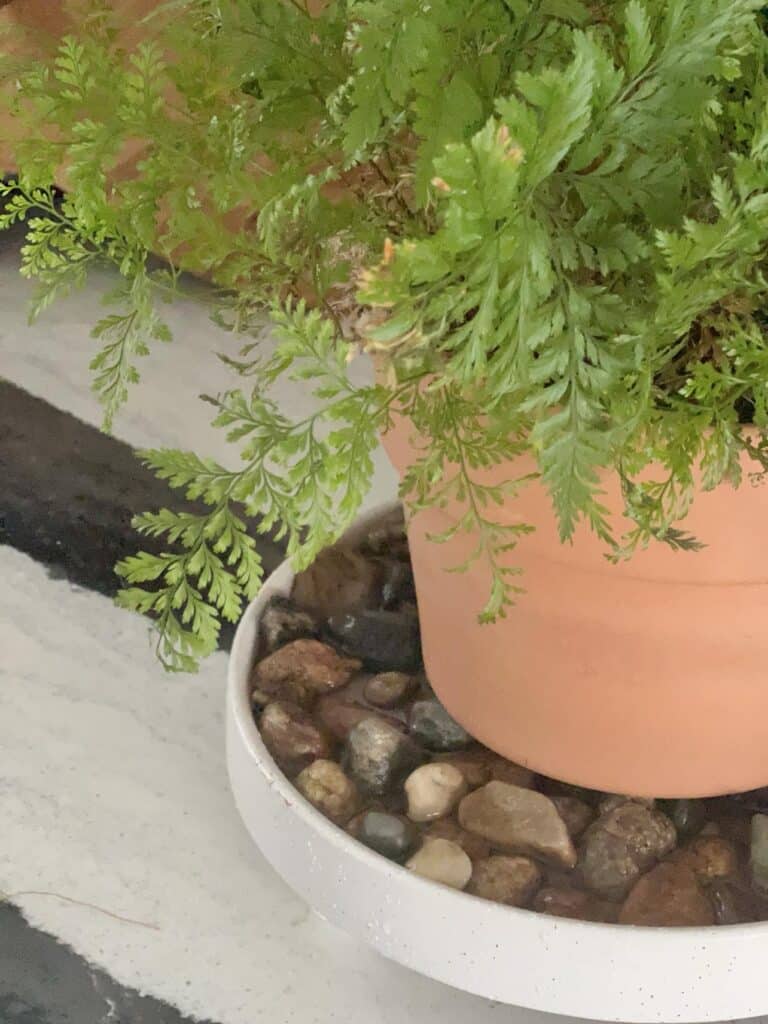
This blog contains affiliate links. This means a small commission is earned if you make a purchase by using this link. The price you pay will be the same whether you use the affiliate link or go directly to the vendor’s website using a non-affiliate link. As an Amazon Influencer, I earn from qualifying purchases.
Enhance Your Indoor Garden with a Pebble Tray Solution
Imagine me lounging at home on a lazy afternoon, sipping my favorite beverage and admiring my lush indoor plant jungle.
(Yes, I get one of these afternoons every once in a while!)
But wait – something seems off. My once vibrant houseplants are looking a tad… lackluster.
What is wrong with my plant babies?
As I ponder this botanical mystery, I look down at my hands.
Oh dear…dry, rough, and just a little sad-looking.
It dawns on me – my plants might be feeling the same dryness woes as my hands!
My hands and my little leafy comrades are battling moisture woes!
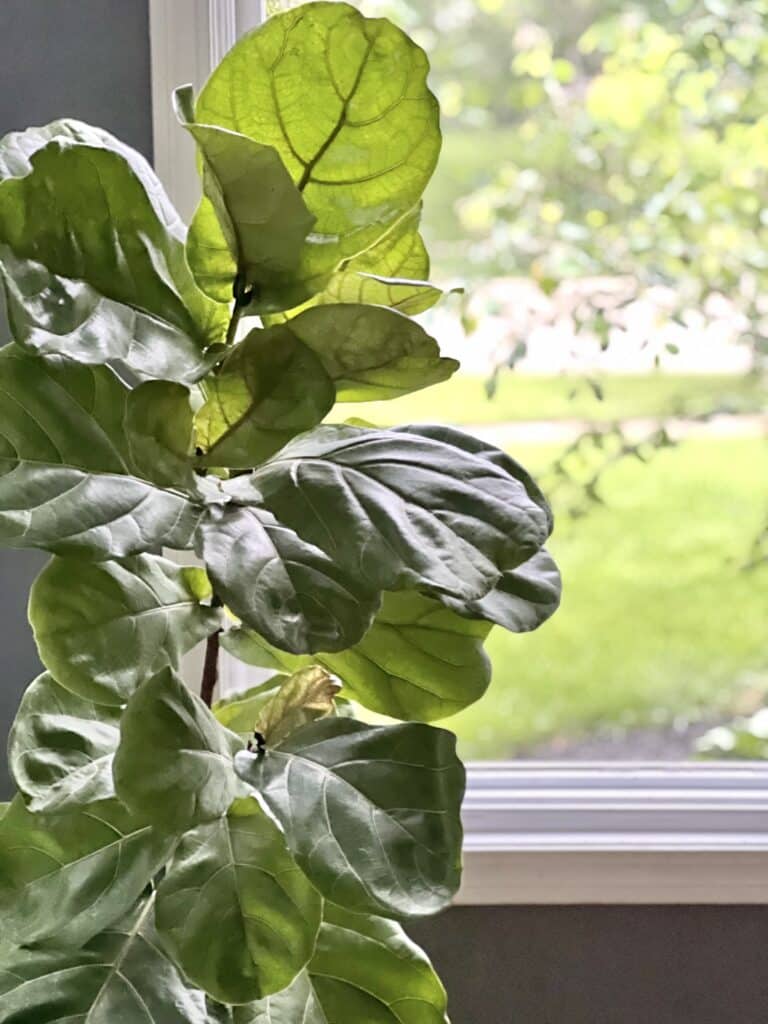
We both get enough water. But we need moisture!
My hands in the form of lotion and my plant babes in the form of extra humidity.
Time to stage a full-blown hydration intervention!
As I slathered my favorite moisturizer on my hands…a brilliant idea strikes – the pebble tray!
With a shallow dish, some small rocks, and a splash of water, you can create a simple pebble tray for your plants. This is a great way to boost relative humidity levels and save your plants from dehydration.
So, grab your watering can and get ready to easily tackle moisture restoration and plant revitalization. Because when it comes to keeping your indoor jungle thriving, a little DIY magic and a whole lot of leafy love go a long way!
Let’s dive into the wonderful world of pebble trays and discover how they can transform your home into a botanical paradise!
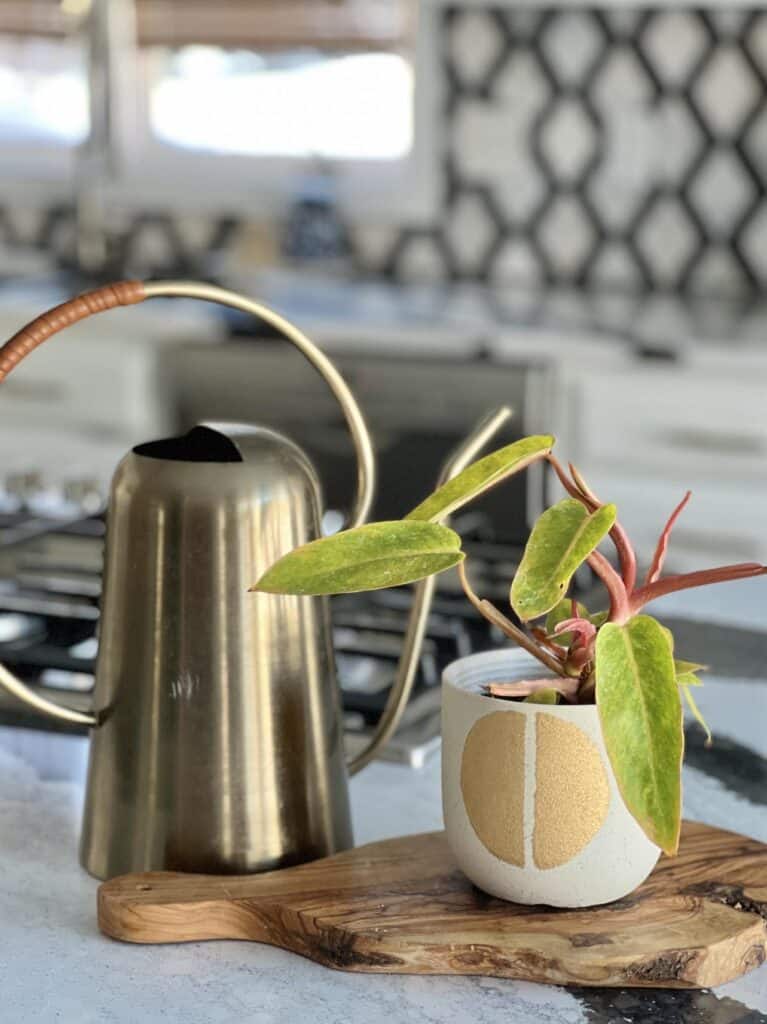
Do pebble trays work for plants?
First things first, let’s talk about why pebble trays are a fantastic addition to your indoor gardening arsenal.
Indoor environments, especially during colder months or in spaces with air conditioning, often have lower humidity levels than what many plants prefer. This can lead to issues such as dry, crispy leaves, wilting, and overall stress for your plants.
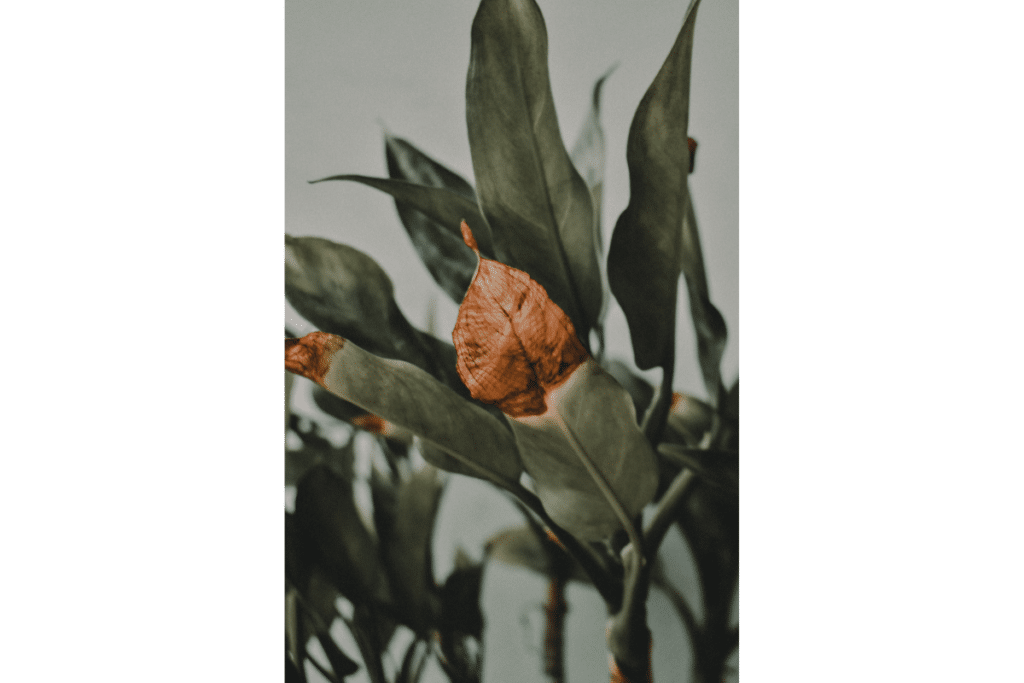
Enter the pebble tray – a simple yet effective solution for increasing humidity around your plants.
By placing a tray filled with water and pebbles beneath your plant pots, you create a microclimate of moisture that helps to maintain optimal high humidity levels.
As the water in the tray evaporates, it creates a gentle and continuous release of moisture into the air, providing your tropical plants with the humid conditions they crave.
Benefits of Using a Pebble Tray
- Improved Plant Health: Adequate humidity levels are crucial for plant health, particularly for tropical houseplants. By using a pebble tray, you can mimic these high levels of humidity indoors, leading to happier, healthier plants.
- Prevents Dryness: Dry indoor air can result in parched soil and dehydrated plants, especially during winter months. Pebble trays help combat this by increasing the ambient humidity around your plants, reducing the risk of dryness-related issues.
- Prevents Root Rot: A pebble tray can prevent root rot by providing a barrier between the plant’s pot and too much water. This allows for better drainage and prevents standing water around the roots. It acts as a reservoir for excess water, reducing the risk of the soil becoming waterlogged and promoting healthier root conditions.
- Enhanced Growth: Plants provided with the right humidity levels tend to grow more vigorously. Using a pebble tray can encourage robust growth, strong plant roots, and lush foliage.
- Natural Pest Deterrent: Some pests, such as spider mites, thrive in dry conditions. By maintaining higher humidity levels with a pebble tray, you can deter these unwanted visitors and keep your plants pest-free.
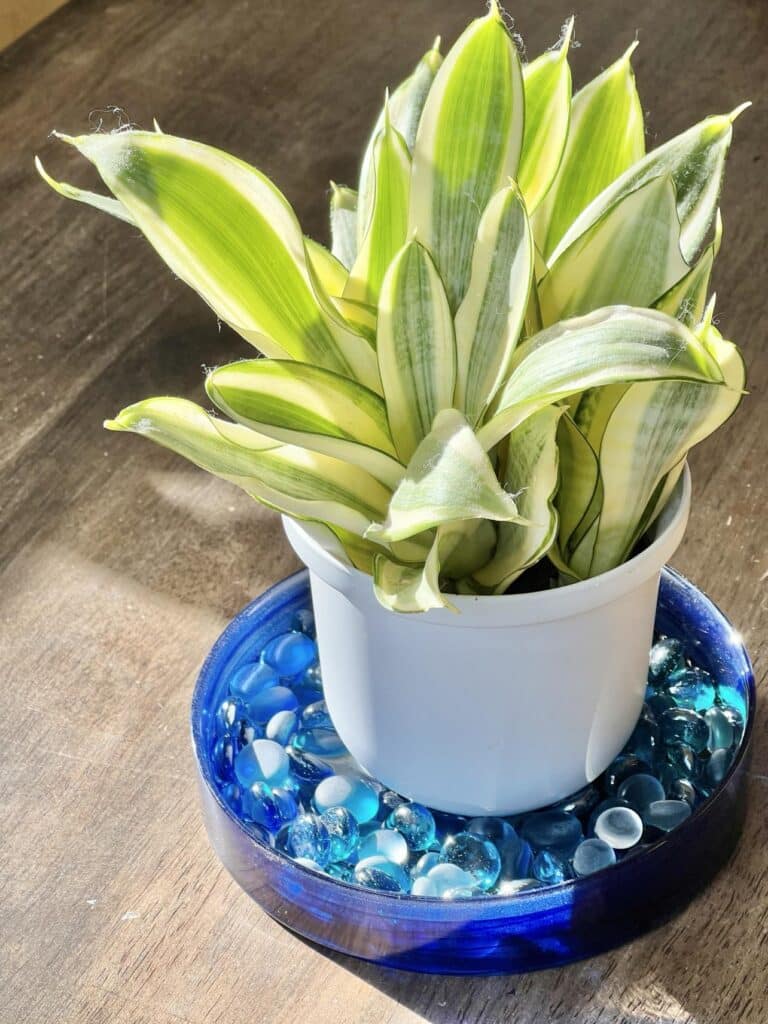
How to Make a Pebble Tray for Plants
Now that you understand the benefits, let’s get into the fun part – creating your own pebble tray!
You will need just a few things…
Supply List
- Shallow tray or saucer that is slightly larger than the base of your plant pot
- Small decorative pebbles, stones, or rocks
- Water
Creating Your Plant Pebble Tray
It takes just three simple steps to create a pebble tray for plants.
Fill your plant saucer or tray with a layer of pebbles and spread them evenly in the container.
Next, pour water into the tray, filling it to just below the top of the pebbles.
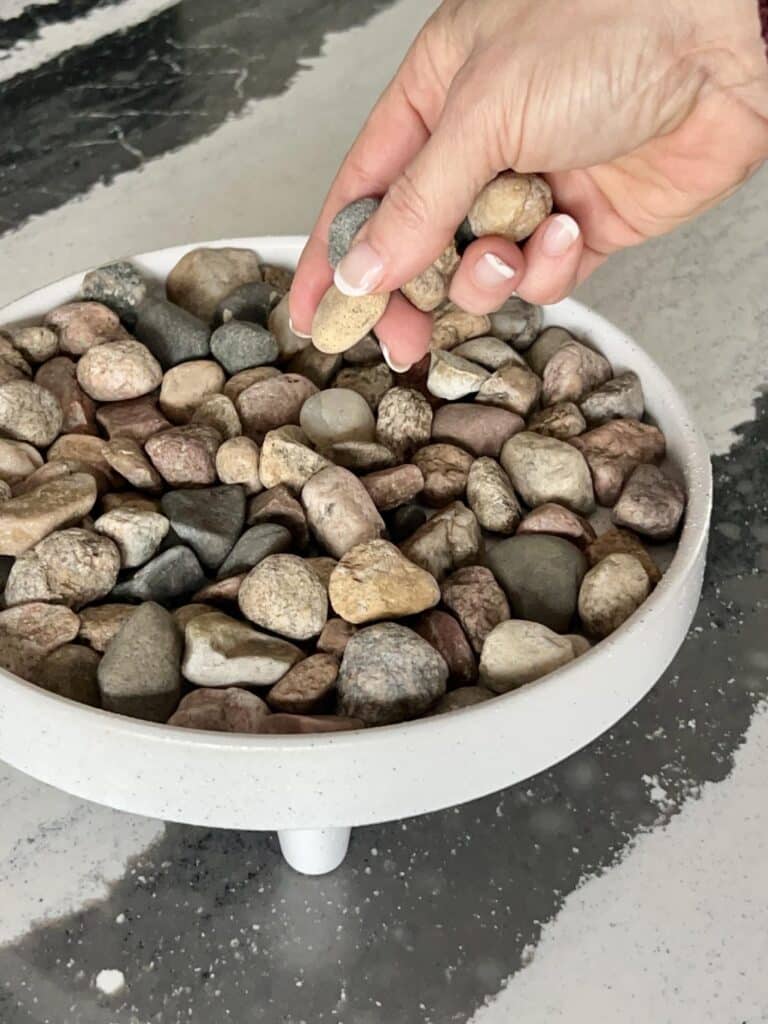
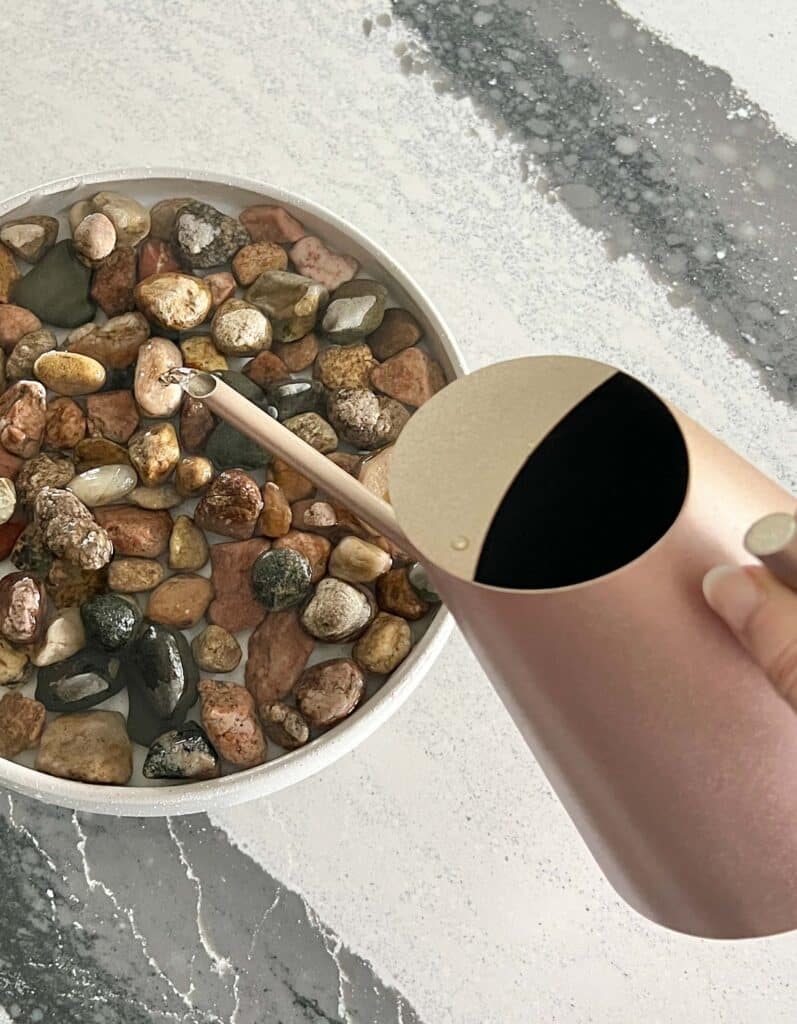
Place your plant pot on top of the pebbles, ensuring that the bottom of the plant is not completely submerged in water.
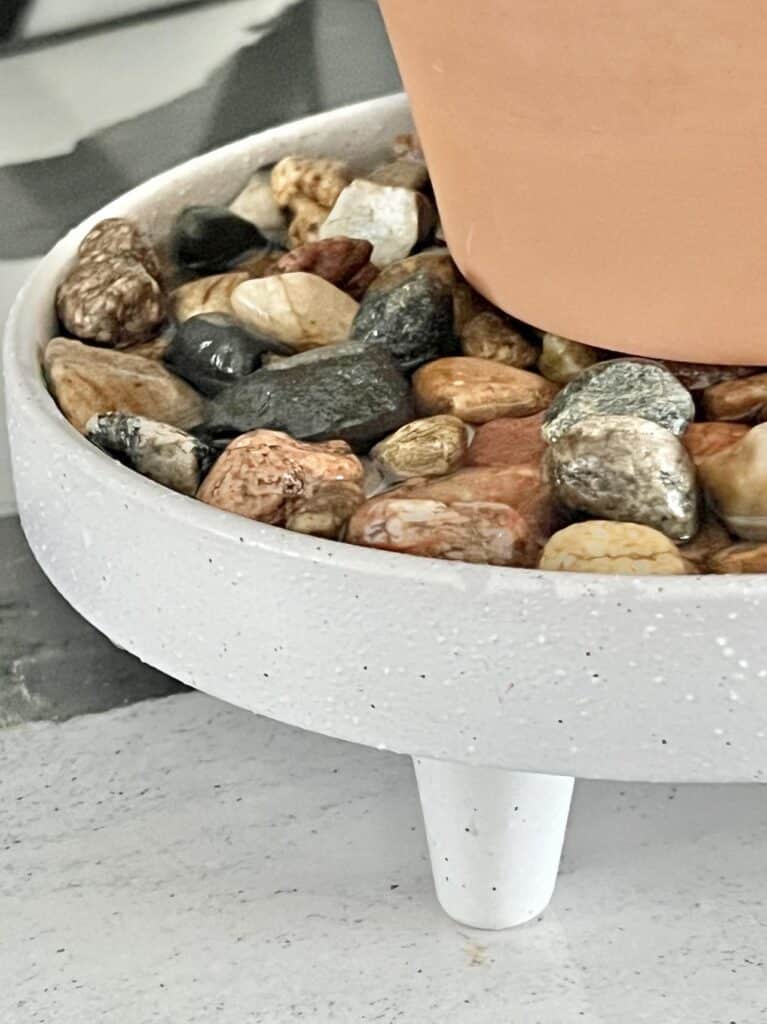
Maintaining Your Pebble Tray
Once your pebble tray is set up, it requires minimal maintenance to keep your plants happy. Here are a few tips to ensure your pebble tray continues to provide optimal humidity levels:
- Monitor Water Levels: Keep an eye on the water level in your tray and top up as needed to prevent it from drying out completely.
- Keep Your Pebble Tray on a Flat Surface: It’s a good idea to keep your pebble level to avoid water spilling or uneven water distribution to your plants.
- Clean Regularly: Remove any debris or algae that may accumulate in the tray to prevent clogging and maintain water quality.
- Refresh the Pebbles: Over time, the pebbles in your tray may become dirty or discolored. Periodically rinse them with water or replace them entirely to keep your tray looking fresh.
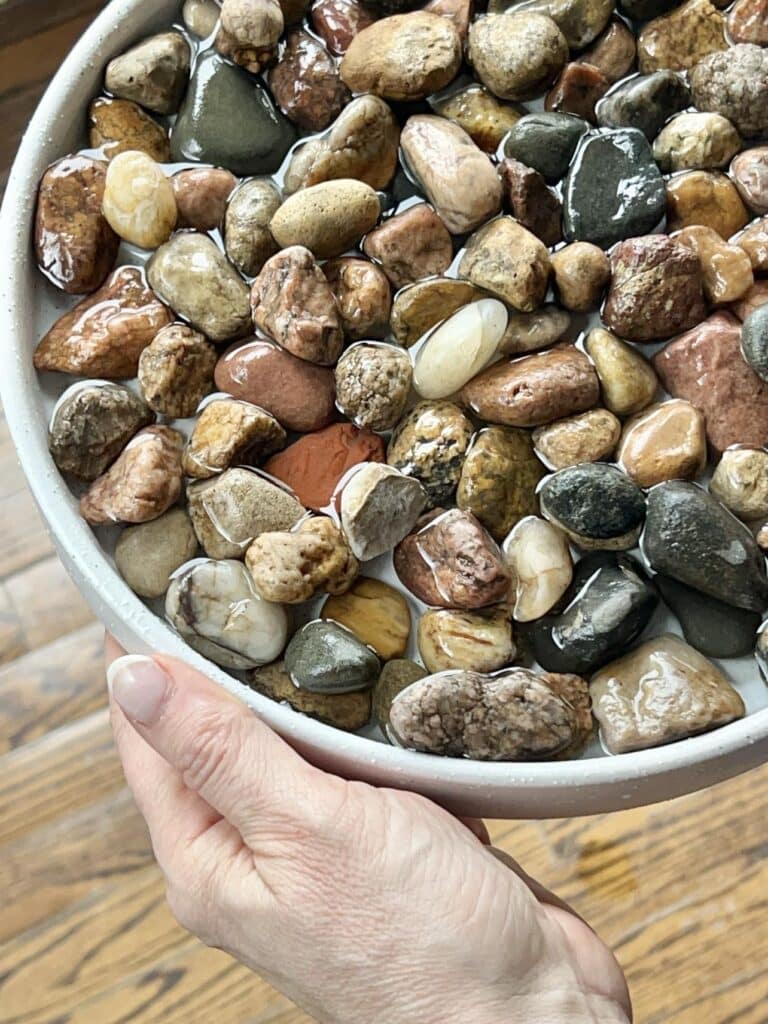
Pebble Plant Tray Style
There are so many different ways that you can create a pebble tray to enhance your home’s decor.
While you can shop and find many amazing plant trays, the best way to find a tray is to simply shop your home! Look for any of these items:
- Vintage saucers
- Shallow soup bowls or decorative bowls
- Baking or casserole dishes
- Ceramic or glass pie plates
- Decorative tray or platter
- Wooden trays or serving boards
- Dog dish (I once made a succulent plant garden from a dog dish!)
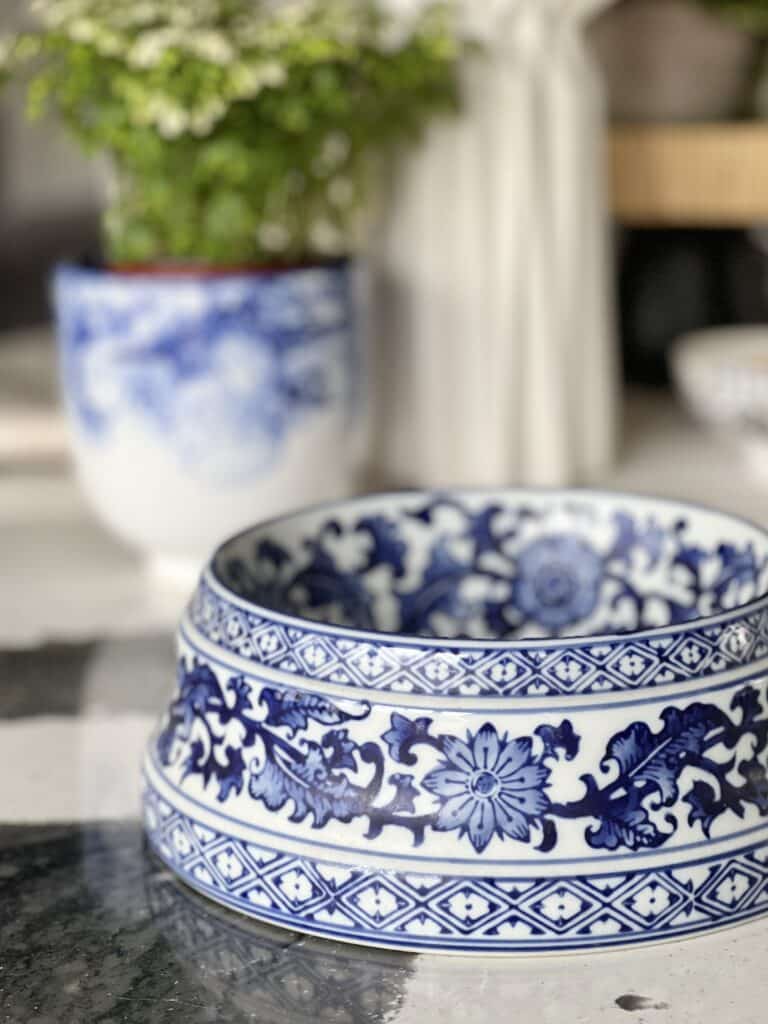
As for the type of pebble that you use, there are many wonderful options.
My daughter and son-in-law finished a backyard project where they removed a lot of river rock. Lucky me…they gave me as many river rocks as I wanted. Perfect for plant pebble trays!
River rock is especially nice for larger pebble trays because the size of the rocks can be slightly larger. As long as your layer of rock and the base of the pots are level, you are in great shape!
Beach glass or other colored glass makes for a beautiful pebble tray.
This green glass pebble tray really dresses up this fiddle leaf fig transplant still in its grow pot.
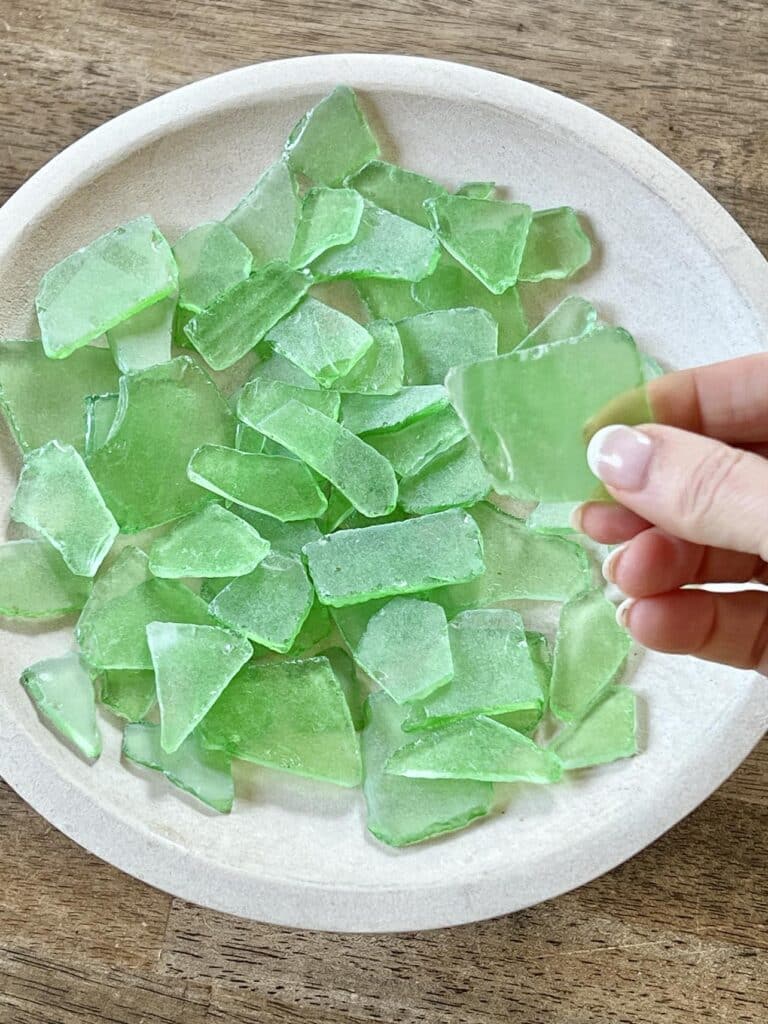
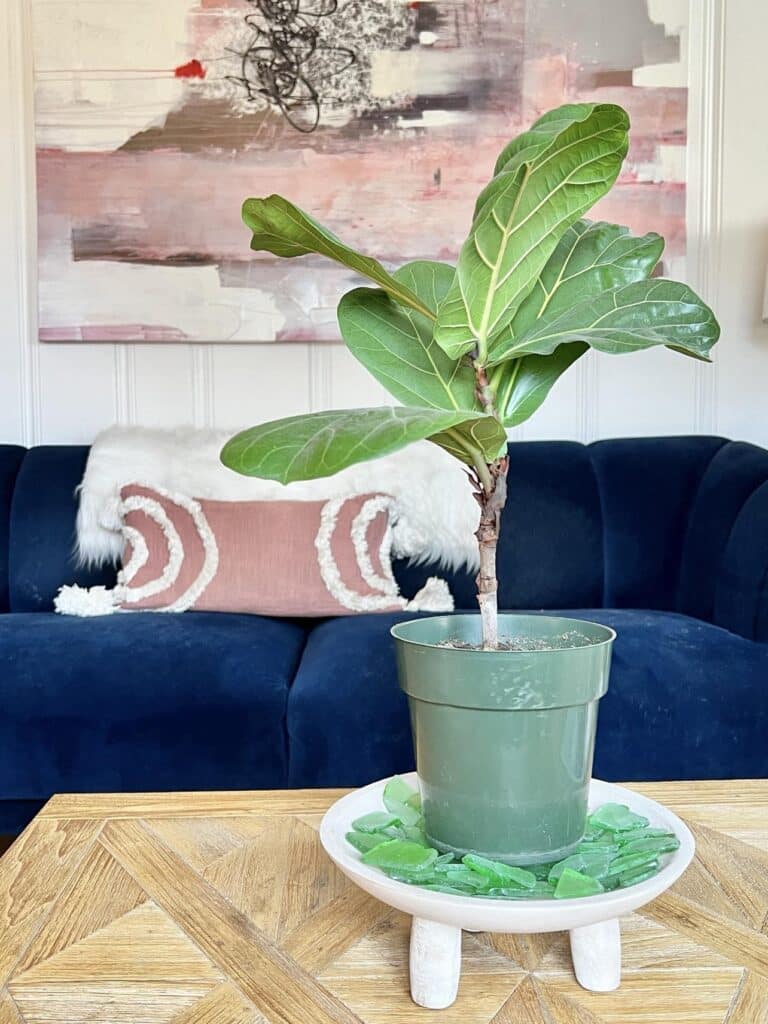
Another easy DIY pebble tray idea is to use a colored glass tray and fill it with glass stones in a coordinating color shade. Placed near a window with indirect bright light, you will have a stunning colored light show to anchor your plants!
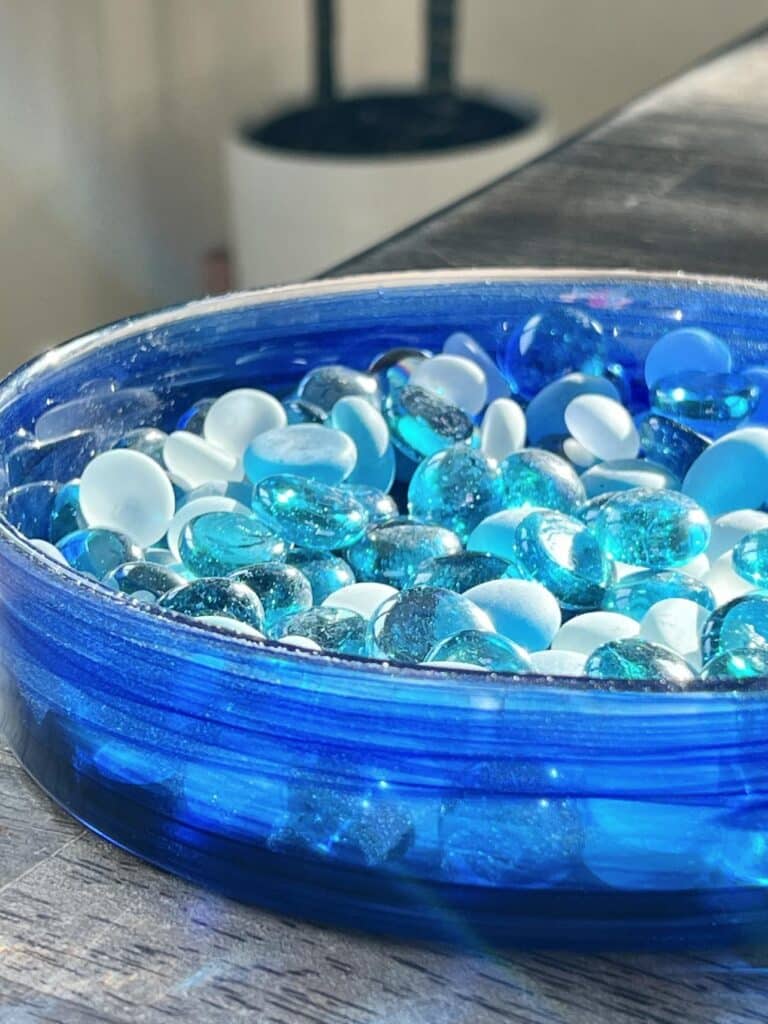
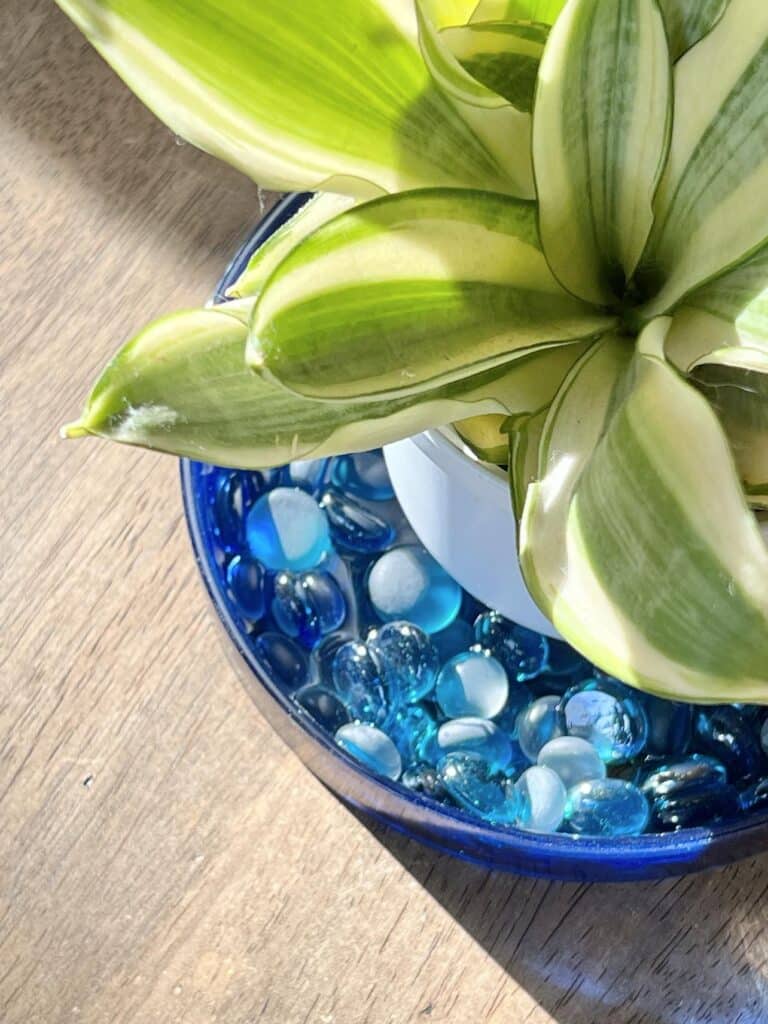
Q&A
What humidity level is best for indoor plants?
According to the Greater Des Moines Botanical Garden, the ideal humidity level for most indoor plants ranges between 60% to 80%, providing enough moisture for healthy growth without promoting fungal issues or mold.
Does a bowl of water increase humidity for plants?
Yes, a bowl of water can help create a more humid environment for your plants. As the water evaporates, it releases moisture into the air, raising the humidity level in the immediate vicinity. However, this method may not be as effective or consistent as using a dedicated humidifier or a pebble humidity tray, which provides a more controlled and sustained release of moisture.
Why not put rocks in potted plants?
Putting rocks or gravel in potted plants can hinder proper drainage and airflow, leading to waterlogged soil and potentially root rot. Additionally, rocks at the bottom of the pot can create a false water table, causing the plant’s roots to remain in constantly moist conditions, which is detrimental to their health. It’s best to use a well-draining potting mix and ensure proper drainage holes in the pot to maintain optimal soil moisture for your plants.
Happy and Healthy Plants
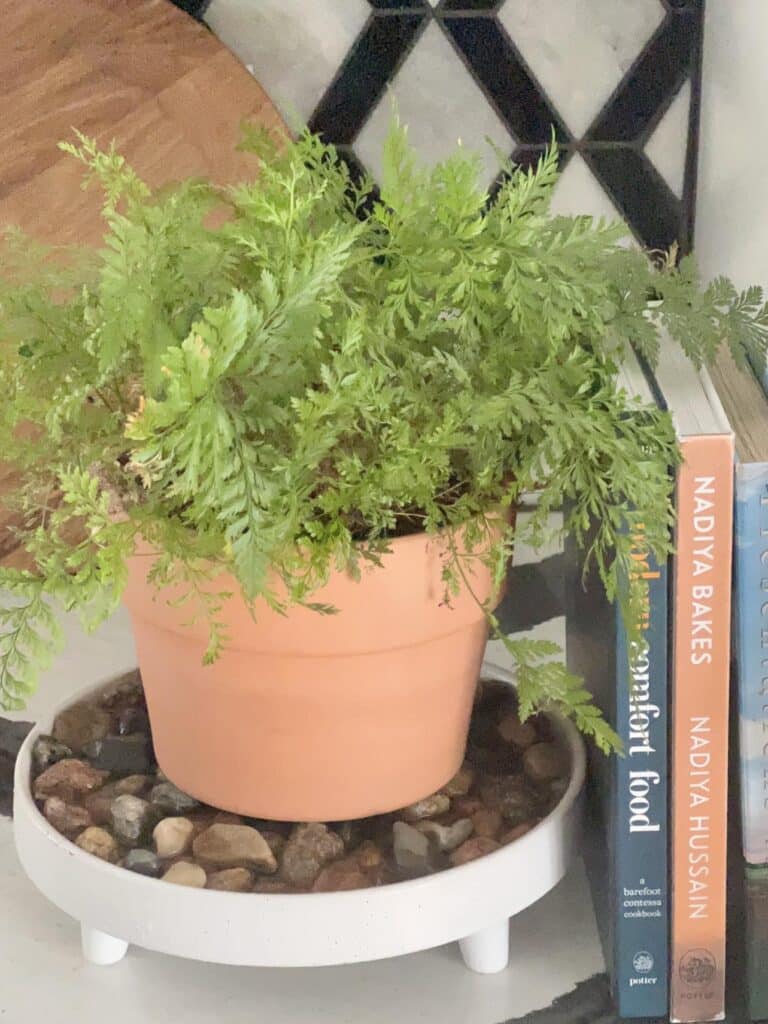
So there you have it – a simple and easy way to keep your indoor potted plant happy and hydrated. With a pebble tray, you can banish dryness and root rot worries while increasing the humidity of the air and adding a touch of greenery to your home.
So grab a tray and some pebbles, and give your humidity-loving plants the TLC they deserve. Your leafy buddies will thank you for it!
Cheers!

Don’t Forget to Pin It!
Pin the image below to your boards on Pinterest (just click the Pin button in the top left corner). You can also follow along with me on Pinterest!
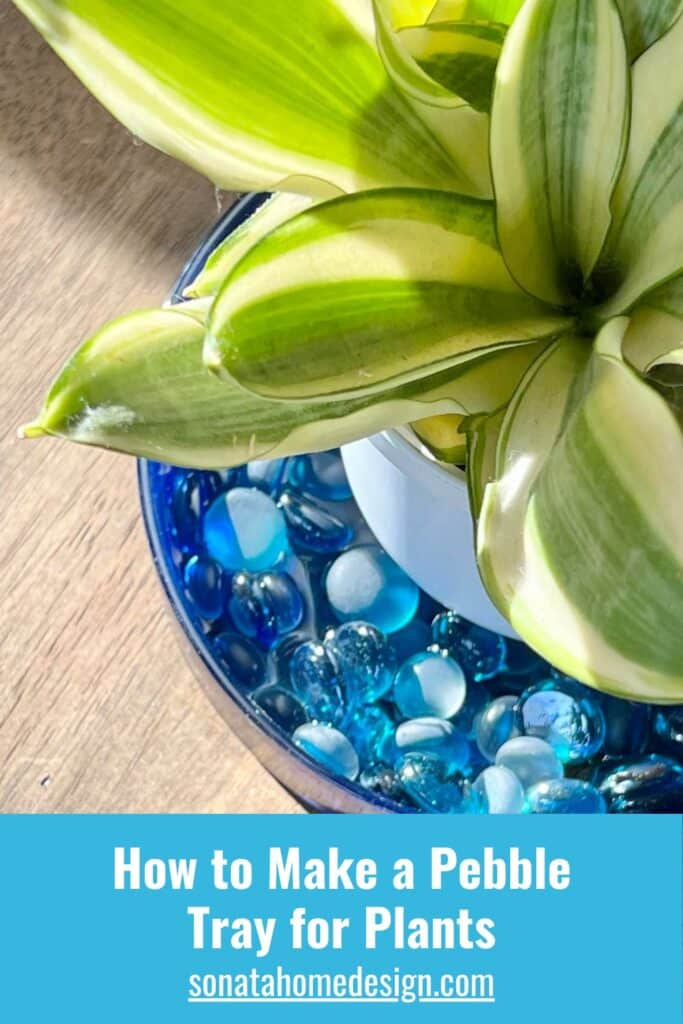
How to Propagate a Fiddle Leaf Fig Cuttings
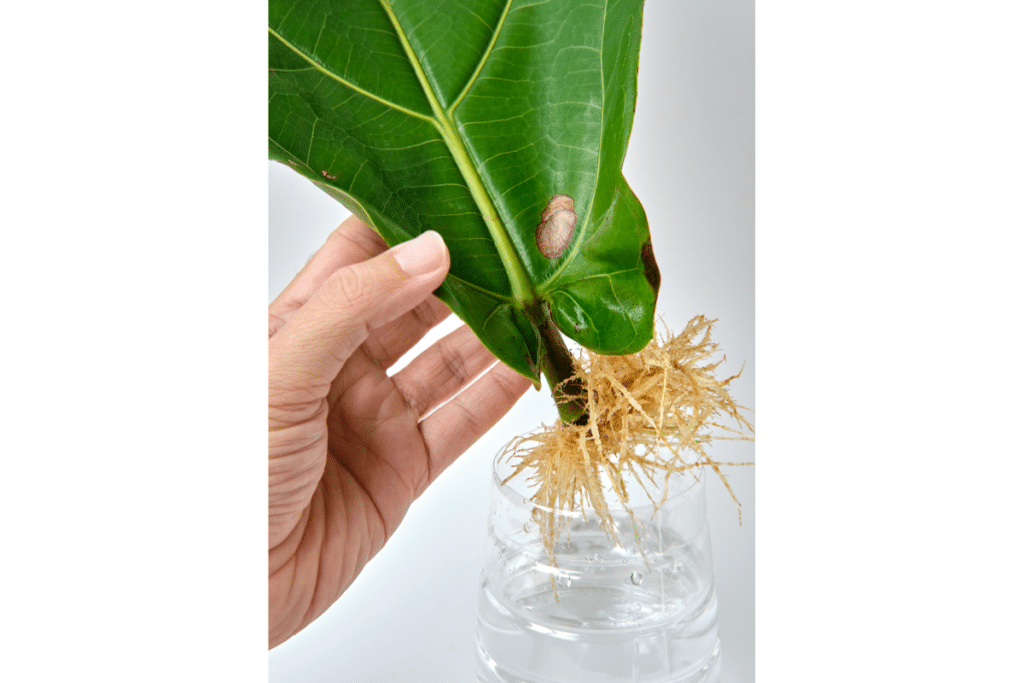


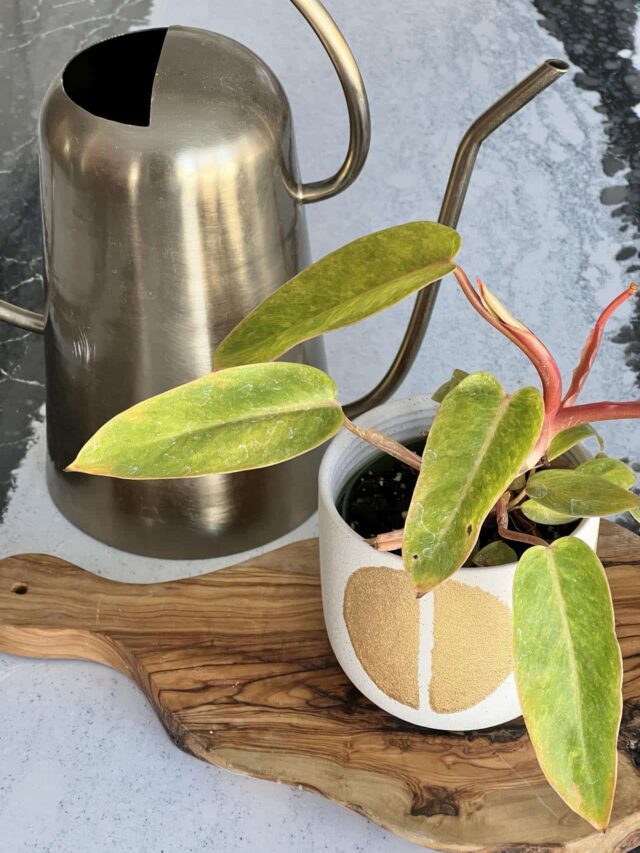
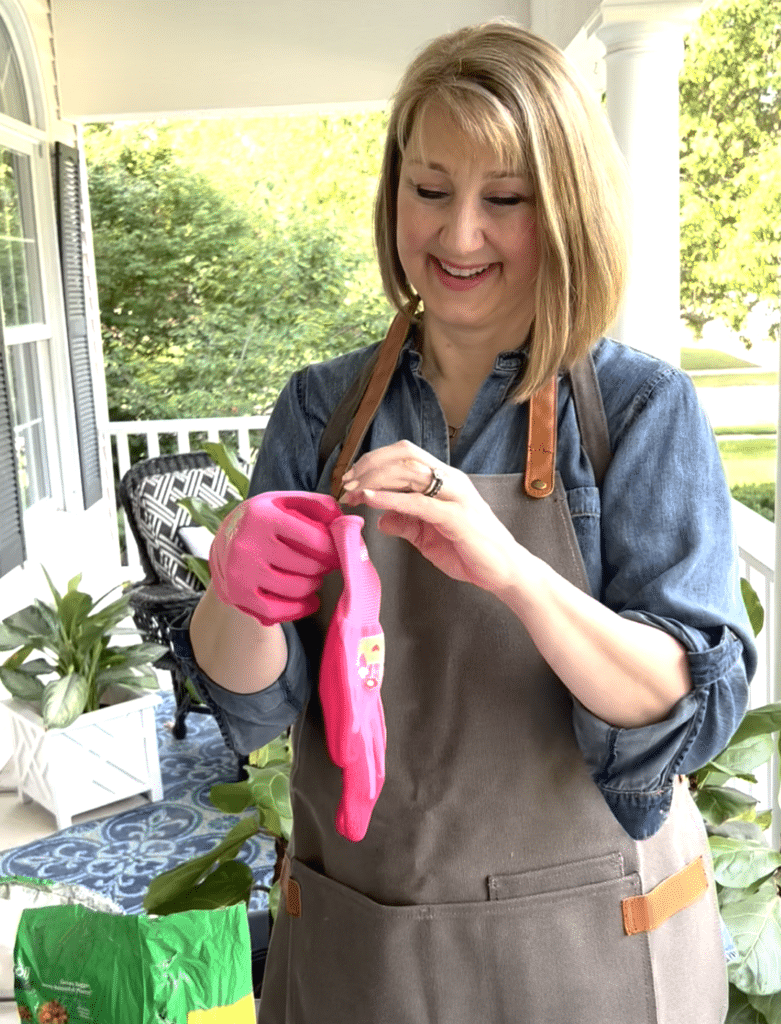

Wahoo! I JUST purchased a new Ficus plant not too long ago so all of your helpful tips are SO appreciated, Missy!! Thank you!
Thanks for spreading this knowledge to us. I also write some words about plan and manage your events must visit my page.
I had no idea! I live in a very dry climate, and my plants could use this. Pinning to save and share! I’m going to try this. Thank you! Visiting from the Love Your Creativity linkup.
I’m so glad you found this useful, Jennifer! We are humid around here in the summer but so dry in the winter. Pebble trays keep my plants happy and healthy!
Such a simple trick, but so needed for many container gardens! Delighted to be featuring your post at this week’s Tuesday Turn About “Everything Garden”. Pinned!
Thank you so much, Julie!
I am not sure if my last comment when through or not. Sketching internet today. But I love this post and it will be a feature this week. #HomeMattersParty
I saw that when I linked! Such a nice surprise! Thank you so much!
Your Post Was Very Helpful To Me.
Your idea and its very important and i will shared it,
Your post was Very help full to me.